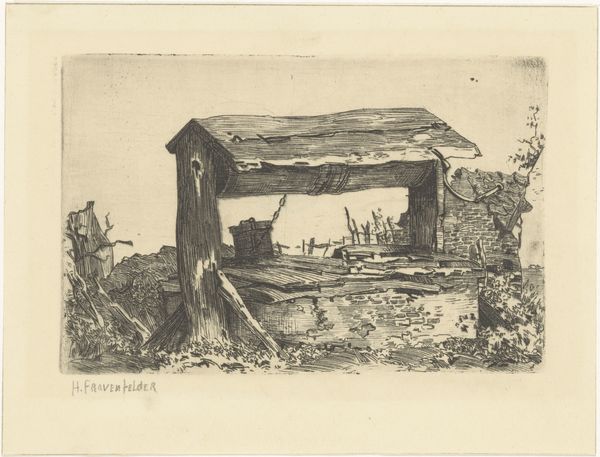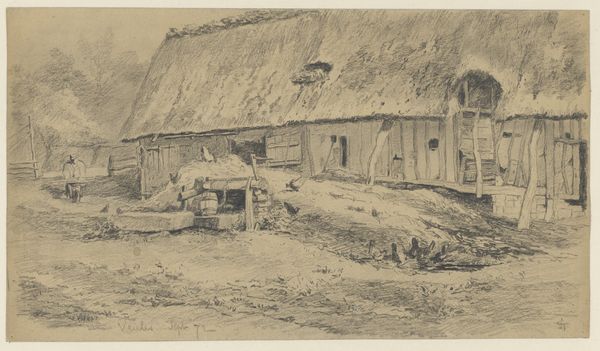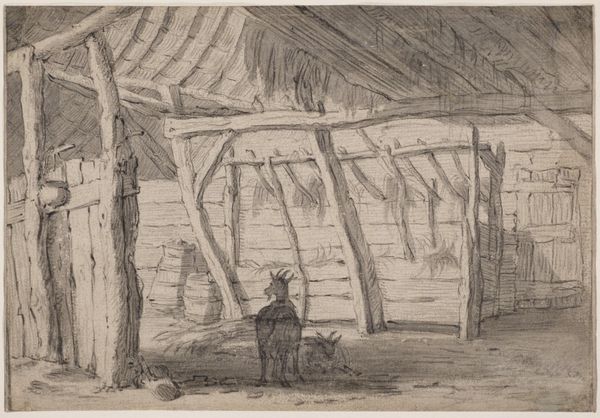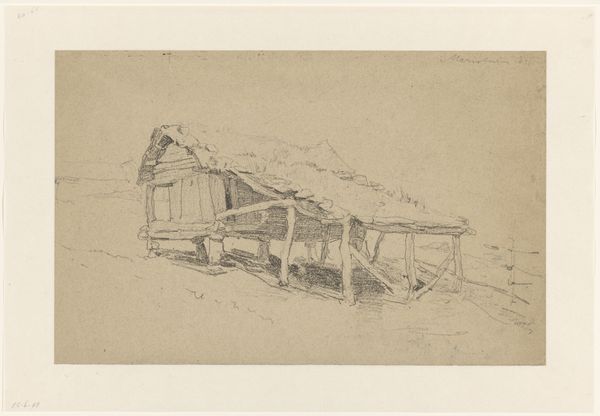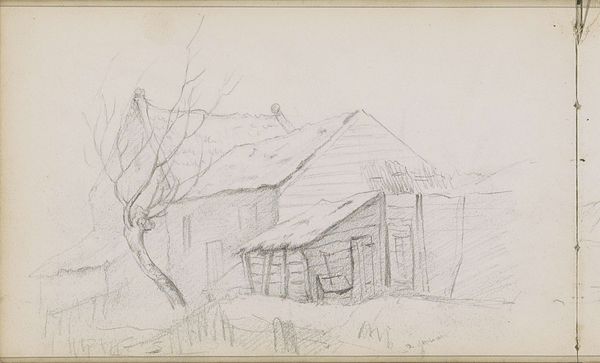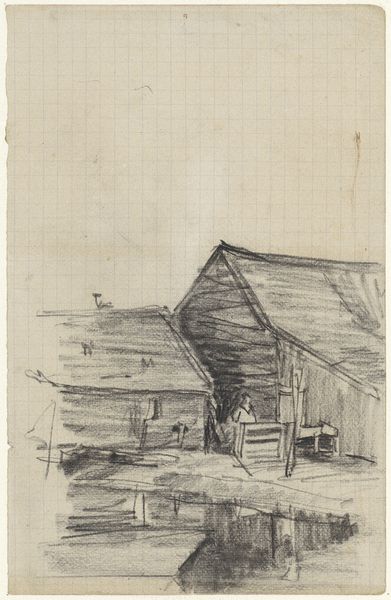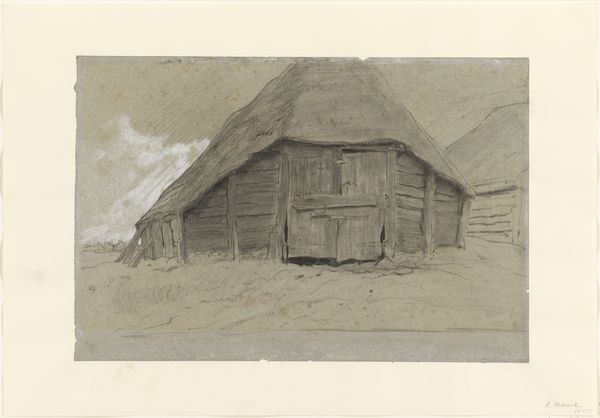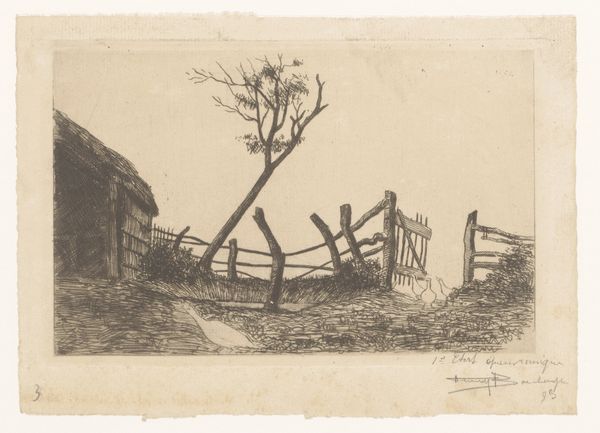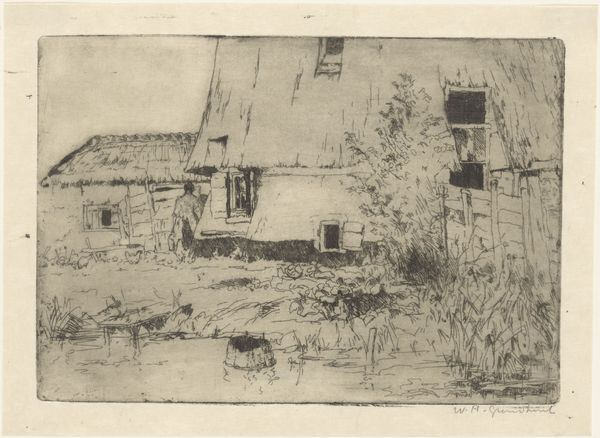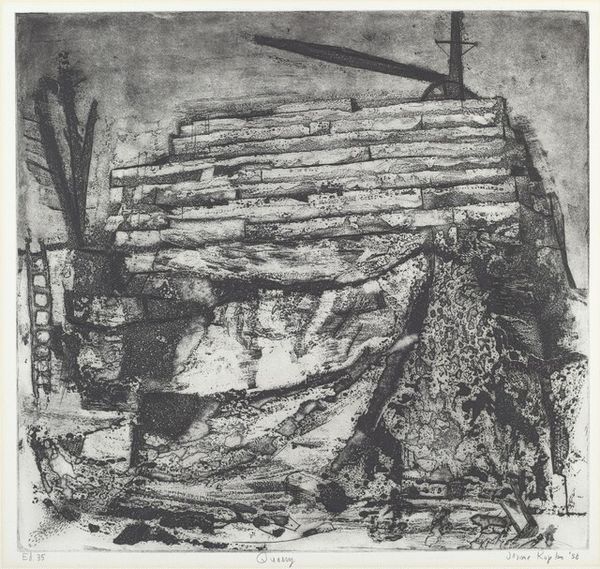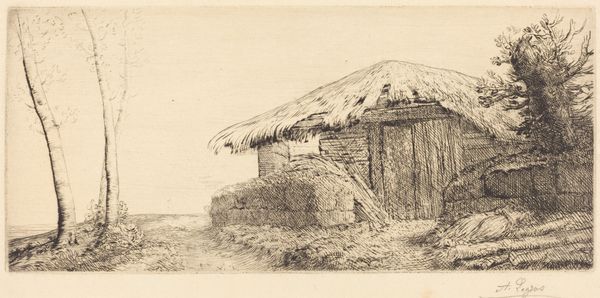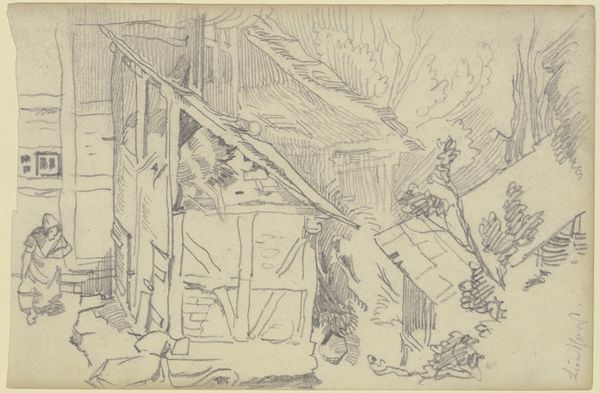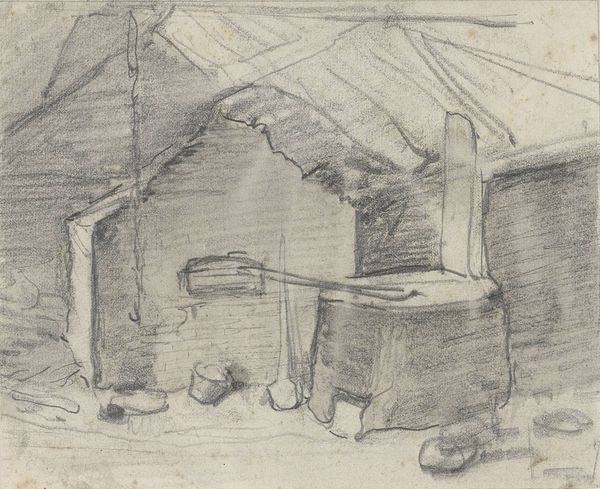
drawing, chalk, graphite, architecture
#
drawing
#
landscape
#
chalk
#
graphite
#
architecture
#
realism
Copyright: Public Domain
Curator: Isn’t there a certain quiet dignity in decay? That's the question that springs to mind looking at this drawing, "Dilapidated Barn." Editor: Definitely. It’s… nostalgic, almost, despite being just a humble graphite and chalk sketch. I love how the light falls on the broken thatch roof; there's an air of abandonment. Curator: You've hit upon a key element. The artist here, Bartholomeus Pietersz. Barbiers, has used subtle shading to really emphasize the barn's slow disintegration, this process of architecture becoming landscape again. There is so much texture! Editor: I wonder about his reasons for capturing such a mundane scene. Farm buildings are seldom grand monuments, are they? Was he pointing to some socio-economic shift, perhaps, in agricultural practices? Curator: Precisely. Depicting something so unassuming might well be Barbiers’ subtle commentary. We know these drawings were often displayed at academies to instruct students, too. Could it also have been a meditation on the transience of material existence? Editor: That makes so much sense! Almost a vanitas, but using architecture rather than a skull as its central memento mori? It’s a quiet sort of radicalism. This emphasis of this unassuming site… Do we know anything more about it being publicly viewed at that time? Curator: Viewing spaces definitely influenced interpretation back then. In contrast to royal galleries celebrating powerful people with paintings of conquest and dominance, spaces where these were shared implied this space had another role within this system. Barbiers almost seems to ask us what, why and when, more than show us something like many other more famous and classically structured works. Editor: Thank you so much! These buildings are a memory for me. The drawing’s so delicate that it is possible to wonder on the past of things like these, or possible ruins which one cannot visit anymore, instead of just its physical form. Curator: Yes. It invites reflection not only on rural decline, but on the act of witnessing, recording, and appreciating the seemingly insignificant. It seems a good lens through which to focus.
Comments
No comments
Be the first to comment and join the conversation on the ultimate creative platform.
